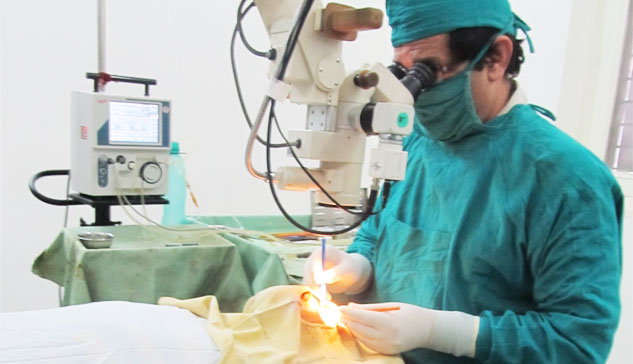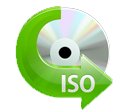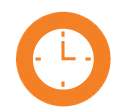Parijat Eye Hospital
We works closely with a range of health professionals
including General Practitioners, allied health practitioners, nurses and medical
professionals to provide excellence in service delivery and care for patients.


Facilities
Any type of eye surgery & consultation and treatment of eye related disease. 20 Bed availability in hospital.
Services we offered
Cataract
A cataract is a clouding of the lens in the eye that affects vision. Most cataracts are related to aging. Cataracts are very common in older people. By age 80, more than half of all Americans either have a cataract or have had cataract surgery.
- Blurred vision
- Double vision
- Sensitivity to light
- The need for more light when reading
- Diminished night vision
- Changed prescription power for glasses
What are the Symptoms of cataract
Retinopathy
Hypertensive retinopathy – Hypertensive retinopathy can affect the eye quietly or can present as loss of vision with sudden onset. Patients with hypertension needs to be examined from time to time and if evidence of retinopathy is found, they would need FFA, OCT, retinal laser or vitrectomy (surgery) depending on the kind of damage.
Age related retinopathies – Crucial areas of the retina can get affected during the old age. Generally the disease affects the people with age more than 50. Vision loss is generally slow and progressive. In few unfortunate patients there can be sudden acceleration of the disease process as well. FFA and OCT are required to diagnose the extent of the disease. Treatment options include medications, intravitreal injections, lasers, telescopic iol implantation and vitrectomy depending on the extent of injury.
Retinal detachment management – Retinal detachment generally happens in people with minus power glasses. It can also happen secondary to trauma, complicated surgery, other vascular retinopathies, some genetic disorders, pediatric retinopathies etc. This is a surgical problem requiring scleral buckling or vitrectomy with/without gas or silicon oil injection.
Cataract complications management – Vision threatening complications of the cataract surgery like dropped nucleus, dropped IOL or endophthalmitis require retinal surgery to restore the vision.
Oculoplastics
Oculoplastics, or oculoplastic surgery, includes a wide variety of surgical procedures that deal with the orbit (eye socket), eyelids, tear ducts, and the face.
Investigation
* Dry eye screening test – done by applying special strips in both eyes for 5 mins. These strips measure the amount of tear production by the eyes.
* Clinical examination- Full thorough examination of the patient is done.
Diplopia charting- It is done in patients who have complaints of double vision. It is done by putting on red green goggles and looking at a beam of light in different directions. It helps to find the reason for double vision.
* Hess charting- This test takes about 5 mins. It is done using a special screen, and helps to find out which muscle is at fault in cases with muscle paralysis and double vision.
* Forced duction test- it is done after putting anesthetic drops in patients eyes. Using forceps eye is moved in different directions to find out if movement of eye is restricted because muscle is paralysed or because it is stuck somewhere in patients with restricted movements of eyes and double vision after trauma to the eye.
* Exophthalmometer- It is a special instrument that is used in patients with protruding or prominent eyes, eg. thyroid patients. Procedure takes about 2 mins, and tells us if the eyes are actually protruding or is it normal.
* Autoperimetry- This is a special procedure which takes about 15 mins, and is done using a machine which flashes light and patient has to click a button if he sees light. It tests the field of vision of patients eye.
* Ptosis evaluation – It is done in patients with drooping eyelids. A thorough examination is done using a series of tests to find out the best treatment modality for the patient.
Glaucoma
Glaucoma is an eye disorder in which the optic nerve suffers damage, permanently damaging vision in the affected eye.
Glaucoma is caused by a number of different eye diseases that in most cases produce increased pressure within the eye. This elevated pressure is caused by a backup of fluid in the eye. Over time, it causes damage to the optic nerve. Through early detection, diagnosis and treatment, you and your doctor can help to preserve your vision.
- People over the age of 45.
- People who have a family history of glaucoma.
- People with abnormally high intraocular pressure (IOP).
- People of African descent.
- People who have:Diabetes. Myopia (nearsightedness). Regular, long-term Steroid/Cortisone use. A previous eye injury.
Who is at the risk of developing Glaucoma?
PTOSIS Surgery
Ptosis (pronounced toe–sys) is a droopy upper eyelid. The upper lid is lifted up by the levator muscle, which is attached to the lid by a tendon called the aponeurosis.
- The commonest cause for ptosis in adults is gradual, age-related stretching of the aponeurosis tendon known as involutional ptosis. The levator muscle itself is not affected and so the movement of the eyelid from looking up to down remains normal.
- Long term contact lens wear can cause ptosis, perhaps because repeated insertion and removal of the lens causes stretching of the tissues.
- Sometimes ptosis follows other eye surgery or an injury.
- The lid may droop due a problem in the nerve supply to the levator muscle
- Congenital ptosis (present since birth) is usually due to a poorly developed levator muscle.
What causes ptosis?
Squint Surgery
A squint (strabismus) is a condition where the eyes point in different directions.
Squints are common and affect around one in 20 children. They usually develop before five years of age, but can appear later.
Signs and symptoms of a squint
One of your child's eyes may turn inwards, outwards, upwards or downwards, while the other eye looks forward. Squints may not be constant, and a minor squint isn't always obvious.
A squint can cause blurred or double vision, but children may not realise there's a problem.
Left untreated, lazy eye (amblyopia) can develop. This is when the brain starts to ignore signals coming from the eye with the squint.
Make an Appointment
Dr. Bhramaresh Chandra Sharma
Eye Surgeon
- Done more then 100000(one lac) successful surgery
- Attend more then 1000 free/charitable eye camp
- Follow international standard in hospital
- An ISO 9001:2008 certified hospital
- Provide services by Dr. Bhramaresh chandra sharma for past many years
- Use Very high quality medical instrument in hospital
- Sharp accuracy in every surgery












